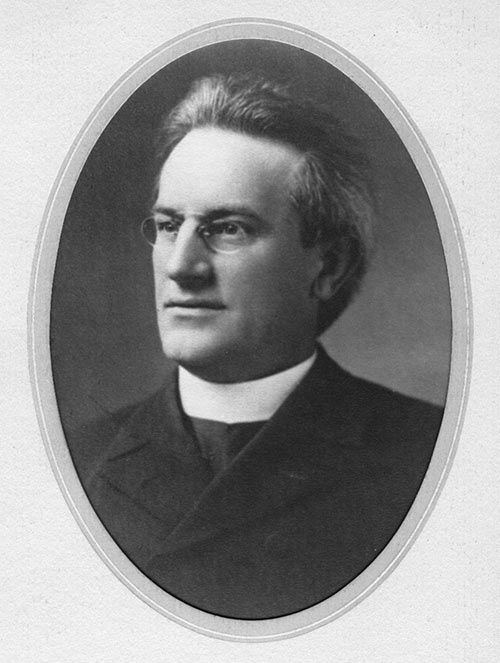Henry George Ganss (22 February, 1855-25 December, 1912) was a Roman Catholic priest of the Diocese of Harrisburg, Pennsylvania, as well as a musician and historian. For twenty years he served as pastor of Saint Patrick’s parish in Carlisle, and then he became pastor of Saint Mary’s parish in Lancaster.1
Henry Ganss grew up in Lancaster, where his father worked as a butcher. At age thirteen Ganss was sent to be educated by the Benedictine monks of Saint Vincent Archabbey in Latrobe, Pennsylvania. There Ganss studied philosophy and theology, and in 1876 he also earned a doctorate in music.
In 1878 Ganss was ordained to the Catholic priesthood, and even after his priestly ordination, Ganss continued to pursue his love for music. He composed two hymns, four orchestral Masses, and a work called “Amaranth Waltzes.”
Along with music, Ganss was interested in history, in particular Church history. He wrote several works of history, primarily essays exploring the era of the Reformation. Ganss alsowrote articles for Catholic journals, as well as entries for The Catholic Encyclopedia, notably those on Franz Liszt and Martin Luther.
In 1895 he published a book-length history of Saint Patrick’s parish in Carlisle. He served that parish as pastor from 1890 to 1910. His previous pastoral assignments were at Lykens, New Freedom, and Milton. At Saint Patrick’s he built the current church on East Pomfret Street. He drew on previous experience raising funds and building new churches as the church at Milton had burned down while he was the pastor there.
Financial help for the building of the new Saint Patrick’s came from Mother M. Katharine Drexel (1858-1955). Immediately to the east of the church building the rectory was built. Further to the west a school was constructed called Saint Katherine’s Hall. That school was intended for the Catholic Indians studying at the Carlisle Indian Industrial School.
Ganss had disagreed with the Indian School’s founder and superintendent, Richard Henry Pratt (1840-1924). Pratt had insisted upon Protestant chapel services for all the students, whereas Ganss, and with him Drexel, had insisted that Catholic students needed Catholic liturgy and instruction. Drexel provided not only funds for Saint Katherine’s Hall, but also staffed it with her Sisters of the Blessed Sacrament.
In 1910 Bishop John W. Shanahan transferred Ganss to Saint Mary’s parish in Lancaster. In his later years Ganss suffered from ill health, requiring him to seek treatment from a specialist in Philadelphia. Ganss died Christmas Day, 1912, in Lancaster. The music for his funeral came from his own Requiem Mass in D, and he is buried beneath a large granite monument in Saint Mary’s Cemetery, Lancaster.

